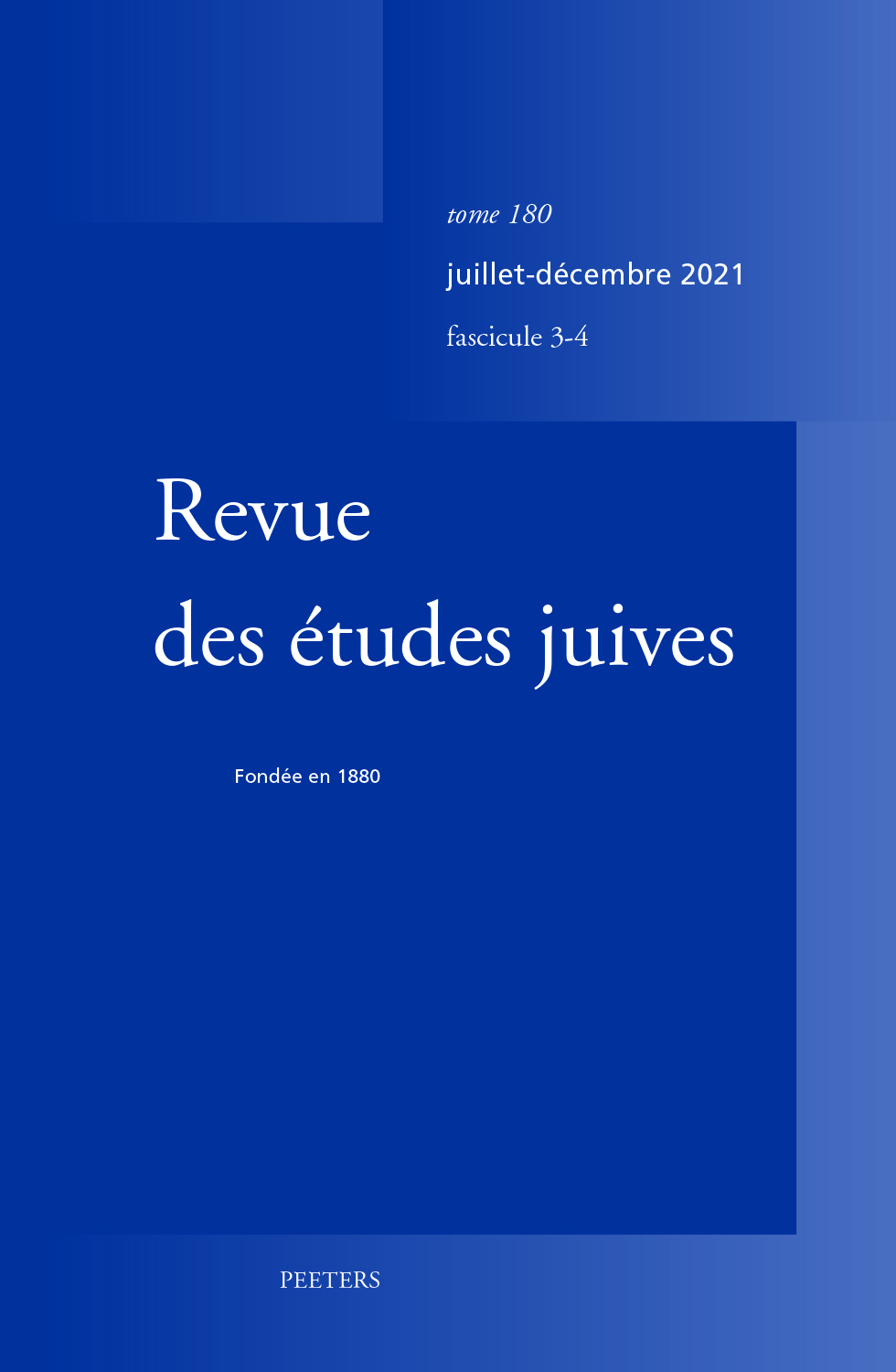 previous article in this issue previous article in this issue | next article in this issue  |

Preview first page |
Document Details : Title: What to Say when you don't Have a Good Answer Subtitle: Rabbi Hoshaya and the Philosopher Author(s): DANZIG, Gabriel Journal: Revue des Études Juives Volume: 177 Issue: 3-4 Date: juillet-décembre 2018 Pages: 281-296 DOI: 10.2143/REJ.177.3.3285574 Abstract : In this article, the author proposes a new reading of a well-known text of Be-re’šit Rabba, which reports a debate between Amora Rabbi Hoshaya (220-250) and a philosopher about circumcision. The question of the philosopher is this: why was circumcision not given to Adam? The author’s argument emphasizes the following points: 1. Rabbi Hoshaya has no really convincing answer to the philosopher’s question; 2. He is therefore led to ask another question; 3. This second question, like the answer given by the philosopher, refers to elements of the philosophical culture of the time; 4. The philosopher’s answer may even contain a quotation from Aristotle’s Nicomachean Ethics; 5. The rabbi’s question is not intended to pave the way for an answer to the first question asked. It is formulated solely to arouse the embarrassment of the philosopher; 6. Rabbi Hoshaya also knew very well how the philosopher would answer his question, which enabled him to control the conversation; 7. The rabbi’s final answer, unsatisfactory in itself, finally appears to be good in contrast to the philosopher’s embarrassment and failure. Dans cet article, l’auteur propose une nouvelle lecture d’un texte bien connu de Be-re’šit Rabba, qui rapporte un débat entre l’amora Rabbi Hoshaya (220-250) et un philosophe au sujet de la circoncision. La question du philosophe est la suivante: pourquoi la circoncision n’a-t-elle pas été donnée à Adam? L’argumentation de l’auteur insiste essentiellement sur les points suivants: 1. Rabbi Hoshaya n’a pas de réponse vraiment convaincante à donner à la question du philosophe; 2. Il est donc amené à lui répondre par une autre question; 3. Celle-ci, comme la réponse que lui donne le philosophe, fait référence à des éléments de la culture philosophique de l’époque; 4. La réponse du philosophe peut même être rapprochée d’un texte de l’Éthique à Nicomaque; 5. La question du rabbin n’a pas pour but d’ouvrir la voie vers une réponse à la première question posée. Elle est formulée uniquement pour susciter l’embarras du philosophe; 6. Rabbi Hoshaya savait d’ailleurs fort bien comment le philosophe répondrait à sa question, ce qui lui a permis de maîtriser à l’avance la suite de l’échange; 7. La réponse finale du rabbin, en soi insatisfaisante, apparaît finalement comme bonne par contraste avec l’embarras et l’échec du philosophe. |
|


